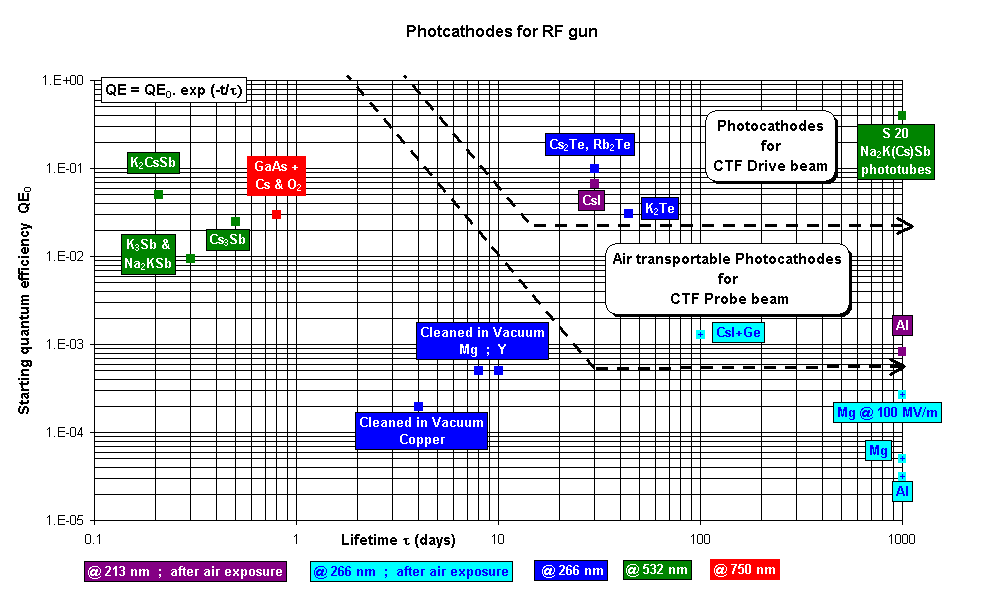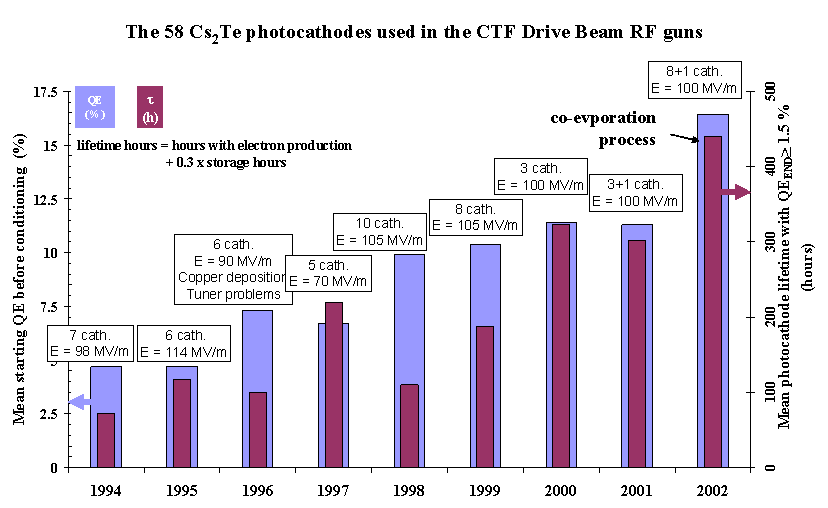Specifications : For the drive beam (DB), the QE (the ratio of the emitted electrons to the incident photons) must be greater than 1.5% at 262 nm during at least one week with an electric field of 100 MV/m. For the probe beam (PB), the QE must be greater than 0.01% at the same wavelength during at least one month with an electric field of 70 MV/m. The produced charges must be linear with the laser energy up to 1 m C (48 pulses of 21 nC) for the drive and 2 nC for the probe beam. In both cases, the response time must be lower than a few ps.

